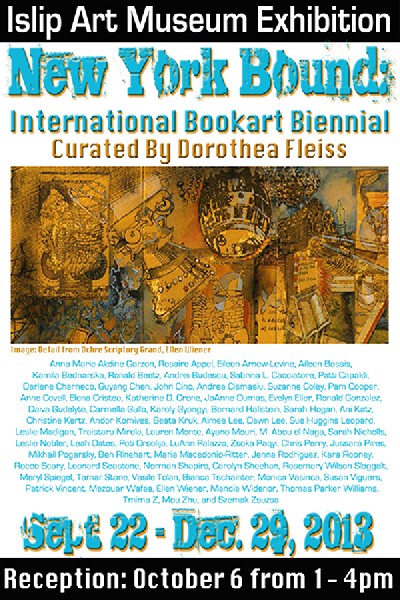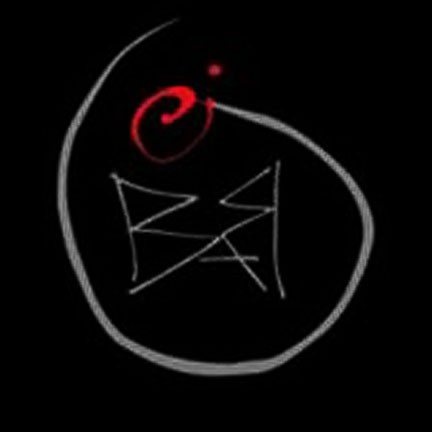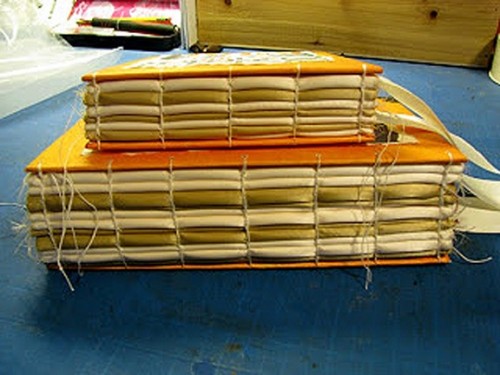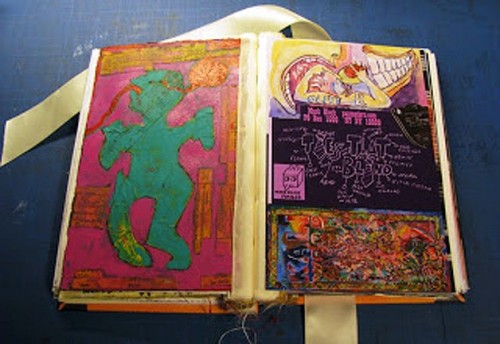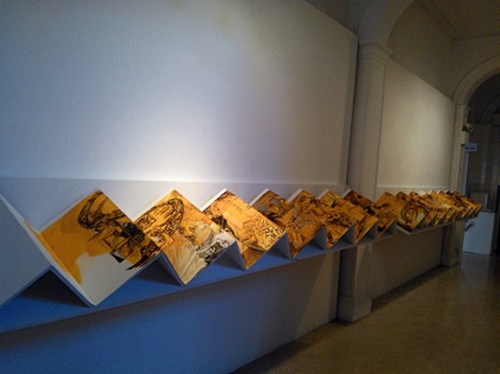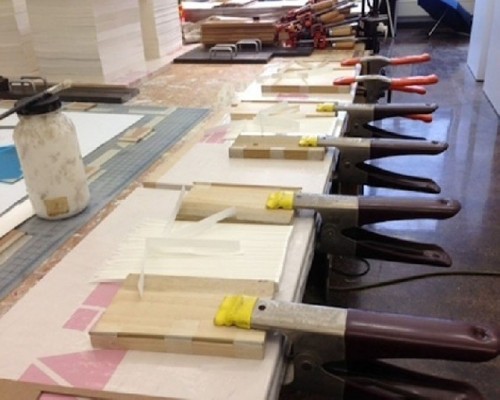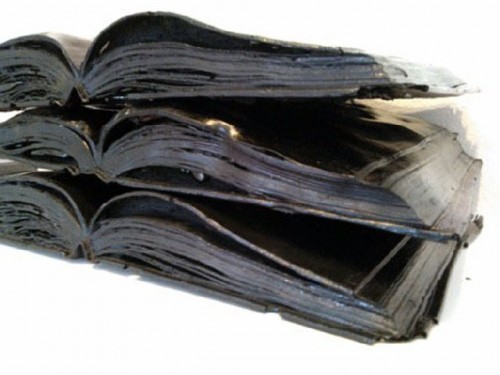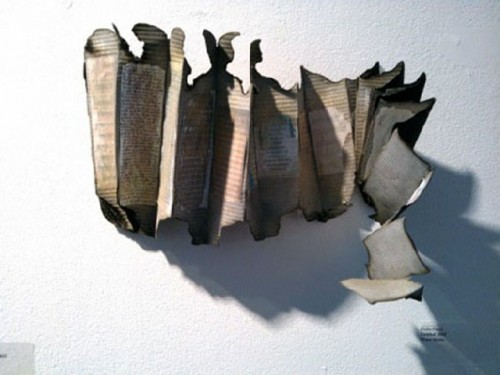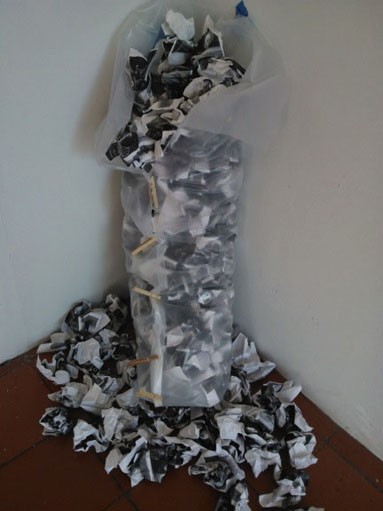New York Bound, Islip Museum, Long Island
International Book Art Biennial, until December 29, 2013
By: Jay Schuck - Nov 26, 2013
New York Bound: International Book Art Biennial
Curated by Dorothea Fleiss
Islip Art Museum
50 Irish Lane, East Islip, NY 11730
631-224-5402
Open Thurs and Friday 10 – 4 pm / Saturday and Sunday 12- 4pm
Through December 29, 2013
The Islip Art Museum is the leading exhibition space for contemporary art on Long Island, features artwork by contemporary artists from around the world. Four exhibitions are presented a year, each organized around a theme that reflects current issues and concerns in our contemporary art world.
Through its annual open call, the museum invites artists to submit work for an exhibition based on a theme of an independent curator’s choosing. This fall, Islip Art Museum visitors will have the chance to see the exhibition New York Bound: International Book Art Biennial.
The exhibition features well over 100 works of art by 70+ artists from around the world, including countries such as Brazil, Germany, Hungary, Morocco, Romania, and the United States. Artists were allowed to ship or drop off up to three pieces of artwork. Dorothea Fleiss, an independent curator living in Germany, organized the exhibition. Fleiss, a practicing book art artist, has chosen the theme to address concerns of the growing influence of technology on our everyday lives.
During our lifetime we have seen the overall decline of the printed text with publications going out of business or converting to purely digital text. It is now possible to store hundreds of books in a virtual library in your back pocket on your tablet or smartphone. The information and stories are now easily accessible to anyone with a WiFi connection, but the objectness of the book has become obsolete.
Handheld devices that project text over luminous LCD screens have replaced the hardcovers, beautiful illustrations, and overall materialness of the book, freeing artists to use the objectness of the book as they see fit. Artists are free to manipulate the book and construct works that are challenging and innovative to the traditional viewer. In the exhibition are a number of artists’ books. They are often published in small editions or are sometimes produced as unique pieces. The form of book art varies with artists creating scrolls, foldouts, accordions, loose sheets of paper in boxes, or neatly bound books.
New York Bound: International Book Art Biennial comes from the curator’s ongoing project, the European International Book Art Biennale, which has held exhibitions across Europe. This is the first time the exhibition has been on display in the United States. The Biennale is organized by the D. Fleiss & East West Artists, an award-winning, non-profit international arts organization that works to create a cultural exchange between artists from Eastern and Western Europe, as well as East and West world-wide.
The exhibition sees the artists using the book as the basis for their artwork, fostering unconventional ideas on the subject. The exhibition encourages the artists to explore the book as an object, allowing them to create works that challenge the viewers’ conventional notions of the book. Books have been cast in resin, reconstructed into sculpture; some artists turn to language, while others gravitate to illustrations. The accordion stylebook appears to be the most popular form of book art, allowing artists to display their illustrative and imaginative qualities.
Artists have turned to social issues as their subject matter while others use their own imaginations for engaging stories of fantasy and imagery. Some artists contemplate the world around them through books, while others pay homage to the ancient art of writing and record keeping.
Keeping with the idea of recording, some artists turn to books as a mode of documenting their own artistic progression as a mode of an artistic journal or diary.
Norman Shapiro has submitted three art journals that find the artist tracking his progress over the course of time. If a drawing bleeds through the page, he uses it as the basis for his next drawing.
Some artists like Russian artist Mikhail Pogarsky have instead submitted works based on letter writing and scrapbooking, another type of record keeping. One of his submissions, Open Letter, is modeled off a package one might send in the mail. The cover of his book is stamped and the artist signs his name in a mailing label. The book consists of bound white envelopes that are stamped and covered with images from his travels. Inside each envelope is a postcard or document that relates to a specific location. He is one of several artists to submit work in this genre.
There are many conventional uses for books. Novelists and writers tell riveting stories of fiction, while scholars and academics use them as vehiclest o present their research in a convenient place with the hopes of getting new ideas into the mainstream.
Galleries, museums, and artists alike compile works of art into catalogues to create a mobile companion to their current or permanent exhibitions or to highlight their artistic processes. Books allow individuals to package their ideas in a variety of shapes and materials. In this way, it is then possible to consider the book as an art object. But books are much more than the content they hold; they shape ideas, influence the world we live in, and have altered the course of our history.
Poets like Dante, Petrarch, and Boccaccio have been labeled the fathers of the Italian language due to the popularity of their works during their own lifetime and have been read by scholars and the casual reader for well over eight hundred years.
Throughout history, religious texts have swayed readers’ ideology and have led to countless wars. Those who have wanted power controlled the written word. Kings and emperors have amassed a vast collection of historical texts as a means of expressing their power and worldliness. Those rulers who felt threatened by the printed word have staged mass book burnings.
With the invention of the printing press and moveable type, the book entered the mainstream, ushering in a period of modernity. The printed word became available to the general public, leading to higher literacy rates around the world. The printed word led to the spread of language, as texts were now printed in secular languages instead of traditional Latin.
The development of print making had a profound impact on early graphic art as artists could now mass-produce their work, making books and prints affordable for the general public. At their core, books are symbols of knowledge and were essential in the cultural exchange of ideas.
Throughout history, grand libraries have been built to house important documents. Commissioned by the Medici family and constructed by Michelangelo, the Laurentian Library is one such library. Although it is marveled at today for its architectural achievements, when it opened its doors in late 16th century, the repository housed more than 11,000 manuscripts and 4,500 early printed books, becoming a cultural hub and learning center in Florence.
Given their vibrant history, it is interesting to see how the artists in this exhibition have reinterpreted the book. The use of language becomes the focal point of their work for artists like Maria Macedonio-Ritter, whose work The Boy Had Brown Hair and Wore a Blue Shirt is deceivingly simple, poured latex letterforms in a line of text that hangs across one of the galleries. Her piece contemplates the visual usage of text to create an imaginary image. Anyone reading the sentence can, for a brief moment, visualizes a boy with brown hair wearing a blue shirt. The image visualized is unique to each person and acts as a template in which the viewer’s imagination adds to the boy’s appearance.
Another artist interested in the relationship between visual art and language is Kara Rooney, whose Monuments of Language attempts to comprehend society’s increasingly detached interactions. Her books are dipped in black resin, giving them a brittle quality that is devoid of all text that signifies the breakdown of memory and the dissolution of knowledge. Another artist interested in the relationship between text and knowledge is sculptor John Cino. His work, Genesis I, takes its name from being the artist’s first book-inspired work. The new series will include a number of stone-bound books with a specific marking designating its place in the series.Since this is the first book in the series each page has only one marking. Cino is interested in the idea of being able to recognize divine objects from different cultures but not being able to understand their significances. Here, he hopes to replicate that idea and have the visitors able to recognize what they see and contemplate the meaning behind it. Although his markings are incomprehensible they represent an unachievable significance that is to be considered. His sculpture is loosely bound to resemble a book and is placed against the gallery’s full-length window, allowing the natural light to shine through his incisions and giving the illusion of light radiating from the book.
Some artists have taken this opportunity to pay homage to the art of writing and influential historical texts that have shaped the world we live in today. Hungarian artist Zsoka Paqyi replicates scrolls from antiquity with her two small works. “The Lord’s Prayer” is reprinted here coupled with images of Christ Pantokrator taken from mosaics that adorn the Byzantine Hagia Sophia. The pages are reprinted with images and texts have been rolled up to resemble ancient papyrus scrolls. These scrolls have been burnt at the edges and faded to give the illusion of age. Another artist inspired by the past is Darlene Charneco whose piece Page 8: Re-Natured is on display across from the Museum’s Docent Desk. The painting is a part of her Book of Hope series, which finds the artist contemplating the common thread of ritual found in all cultures and religions. Each “page” in the series is composed of a coded text of prayers that send a message of peace and harmony among mankind for years to come. She uses a plethora of nails and styles them in a manner that mimics the text of Medieval European scribes or Tibetan monks. Page 8 expresses her hope for humanity’s conscious re-identification with nature around and within us.
Where some artists created works that challenge the viewer’s traditional concepts of books as instruments for recording, tracking progress, or challenging the relationship between language, text, and the visual image, other artists saw this exhibition as an opportunity to submit illustrated books inspired by story telling.
Rosemary Wilson-Sloggatt, breaks down a classic childhood story in her piece A Pocket Cartography of Little Red Riding Hood. Here, the story of Little Red Riding Hood’s visit to her grandmother is broken down to its basic components. Characters and other elements of the story are broken down into visual representational shapes that appear throughout the small map that opens up to reveal the story. Here, a small red triangle signifies Little Red, while a gray and black circle is representative of the Wolf. Although text is absent from the piece, the story is complete.
Other artists have opted to submit original stories in their own hand-bound books. Sabrina Cacciatore, whose book The Endis filled with intaglio prints and texts, reminds the viewer of a Tim Burton Halloween-themed movie. Her story follows a girl haunted by the idea of her own mortality. Her fears are personified through imaginary monsters such as vampires and ghosts until she is finally able to copy with the idea of death.
Similar in theme, Eileen Arnow-Levine’s submission, the traditionally bound She’s Fallen Down Dead, is a playful book with dark subject matter. Her illustrative style mimics that of children’s books as she tries to emulate their look and feel with dark subject matter that focuses on the struggles of life. This book in particular tells a story of a woman who accidentally falls down a flight of stairs to her death and the legal processes of going through her personal possessions after death. Instead of their own stories, other artists turn to traditional folklore for inspiration.
Patrick Vincent, has included four hand-bound books inspired by a composite view of animal mythologies. He has taken different cultures’ views on the raven, the hare, the snake, and the fox and presented them here as tokens of human folly and trickery. Each book is hand-sewn with paper related to the region the fable originates from; for example, his book on foxes is made of fox cotton, while his book on the hare is composed of sabai grass and cotton rag fibers.
The majority of the works included in the exhibition are accordion style art books that highlight the illustrative qualities of the artists. Their pages fold out to expose the artists’ personal styles and subject matter. One theme that runs through the work of several artists is that of the natural world. Dawn Lee’s Water’s Edge unfolds on its shelf to reveals digital photographs printed on rag paper with an alternative waterscape filled with vegetation. Her prints are abstract, and the color tone is muted, requiring viewers to really study her work fully to comprehend what they are seeing. Dawn’s work is placed next to that of JoAnne Dumas, whose work entitled Shimmering, is also an abstraction of digital photography. Although these works are printed onto archival matte paper, there is a reflective quality to the image that resembles its subject matter of reflective bodies of water.
On the opposite side of the gallery is the accordion book of Thomas Parker Williams. His work Traveler No. 2 is filled with black and white illustrations of a unique landscape over the course of several panels. It is intended for the piece to be observed through the accompanying viewfinder that acts as a window of a train or moving car. As the visitor progresses through the piece, the action of moving the viewfinder mimics that of passing through a desert oasis on the open road. Another accordion book, Rosaire Appel’s Another Incident, is made up of digital prints and reminds one of a comic book as the vibrant colors are broken up into different panels. There is a perfect blend of colorful illustration mixed in with black-and-white imagery throughout the museum galleries.
Instead of a boundbook, some artists opted to submit works that consist of loose pages that are meant to be on displayed in any order. Anne Covell’s piece Natural Order: A Game of Pairs consists of handmade playing cards that resemble the childhood game Concentration. The deck of cards contains animals and other elements that are found in nature. Instead of matching pairs, the idea of the game is to associate and partner symbiotic relationships that are found within nature. Players not only learn about the mutual partnerships found in nature, but also the parasitic ones, allowing them to understand the complexity of relationships found in nature.
Bernard Hallstein’s Horse Story consists of loose laminated pages in a crafted wood box, it tells the story of a woman who leaves town with her horse. Since the pages are not bound together, the events of the story are free to appear in any order, allowing a different story to be told depending on the page order. Another artist that submitted a work consisting of loose pages is Romanian artist Andrei Budescu. His work Photographer’s Block is a universal piece consisting of crumbled up pieces of printer paper placed in and around a clear trash bag. Budescu, here, is expressing his frustration over creating something that he can be proud of. Although it is targeted for photographers who can undoubtedly share in his frustration, the piece can inspire the same emotional response in authors who have spent hours trying to write a compelling story, or in anyone who has ever hit a creative brick wall.
New York Bound: International Book Art Biennial was made possible due to of the curator’s relationship with Museum Director/Curator Beth Giacummo. She is the Director of the New York sector of DFEWA and the two curators came together with artist and arts management specialist Jessica McAvoy to create the Fleiss – Giacummo – McAvoy New York Contemporary Art Symposium 2013 (FGM), an international artists residency based in New York to encourage and improve the cultural exchange between artists and collaborating communities. Concurrently in the museum’s ballroom is a special exhibition that features the artwork of FGM artists that were created during their stay on Long Island. Both, the special FGM exhibition and New York Bound, offer museum visitors a unique opportunity to see artwork from around the world and it is encouraged to view this work before the exhibition closes.
In the end it is impossible to discuss every work that is included in this extraordinary exhibition. By their very nature, the majority of these works must be thumbed through, and handled in person in order fully to enjoy them. The overall response from artists and the general public has been hugely supportive.
Thanks must be given to the entire staff, interns, and volunteers of the Islip Art Museum and the Islip Arts Council. Without their hard work and dedication this show would not have been a success. New York Bound: International Book Art Biennial continues until December 29.
This essay is reposted courtesy of Jay Schuck, Assistant Curator of the museum.


